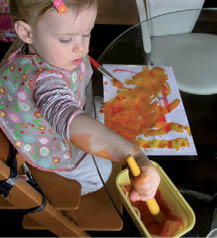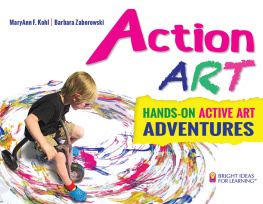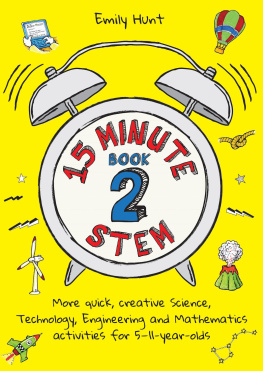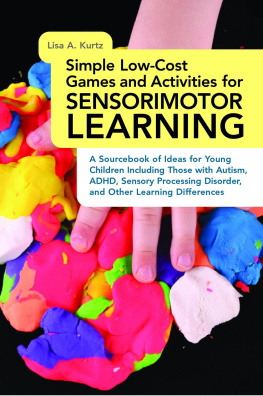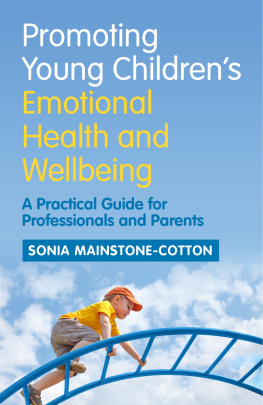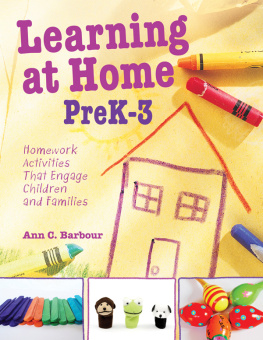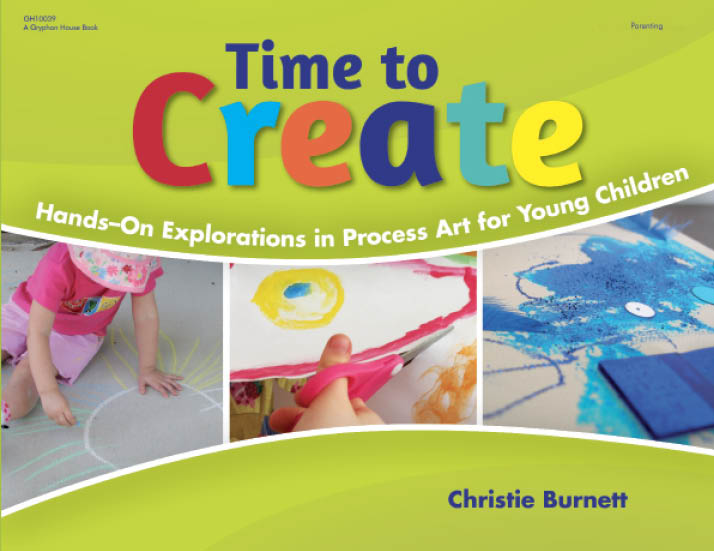
Contents
Dedication
For Immy and AJmay you always find time and space to dream
Acknowledgements
My sincerest thanks to my mother, Karen Shaddock, and dear friends Kate Fairlie (http://picklebums.com) and Cath Oehlman (http://squigglemum.com), without whom this book would never have come to life.
My greatest respect and appreciation to the wonderful MaryAnn Kohl, who saw the potential for this book and supported my every step along this new and exciting path.
My thanks to the team at Gryphon House, who took my ideas and made this book what it is today.
To the loyal readers of Childhood101.comI thank you for giving my words wings to fly around the world.
To the wonderful families and children I worked alongside, thank you for inspiring me to be the best teacher I could be. You taught me so much.
My everlasting love and thanks to my husband, Mathew, for his patience and unquestioning support.
To my daughters, Immy and AJ, for showing me this amazing world afresh, through the eyes of a child.
Time to Create
Hands-On Explorations in Process Art for Young Children
by Christie Burnett
Copyright
2013 Christie Burnett
Published by Gryphon House, Inc.
P. O. Box 10, Lewisville, NC 27023
800.638.0928; 877.638.7576 (fax)
Visit us on the web at www.gryphonhouse.com.
All rights reserved. No part of this publication may be reproduced or transmitted in any form or by any means, electronic or technical, including photocopy, recording, or any information storage or retrieval system, without prior written permission of the publisher. Printed in China through Asia Pacific Offset, FSC Certificate: SGS-COC-003533 and PEFC Certificate: SGS-PEFC/COC-0802. Every effort has been made to locate copyright and permission information.
Cover photographs courtesy of Christie Burnett.
Library of Congress Cataloging-in-Publication Data
The Cataloging-in-Publication Data is registered with the Library of Congress for ISBN: 978-0-87659-418-6.
Bulk Purchase
Gryphon House books are available for special premiums and sales promotions as well as for fund-raising use. Special editions or book excerpts also can be created to specifications. For details, contact the Director of Marketing at Gryphon House.
Disclaimer
Gryphon House, Inc. cannot be held responsible for damage, mishap, or injury incurred during the use of or because of activities in this book. Appropriate and reasonable caution and adult supervision of children involved in activities and corresponding to the age and capability of each child involved is recommended at all times. Do not leave children unattended at any time. Observe safety and caution at all times.
Foreword
by MaryAnn F. Kohl
How rich and rewarding the young childs life becomes when art is an important part of the learning process! Art gives every child an opportunity to be individually creative and original, to plan and test ideas, to wonder and explore, and most important, to imagine and to think.
Christie Burnett offers us pages filled with creative art ideas for young childrenideas she has tested, observed, and fine-tuned for success and appeal. What I most appreciate about her work is that she helps us understand the difference between process art and what most people call crafts. It is process art upon which she focuses most strongly. For the purposes of this book, process art is defined as open-ended creativity and exploration of materials; craft is a product-oriented use of materials. Crafts have value within certain contexts, for certainly they ask children to follow directions and complete a projectimportant skills. But process art encourages children to learn how materials work and behave, to test and try new ideas, and to think! Exploration and learning by doing is a developmentally natural and appropriate way for young children to learn.
I have long been a proponent of process art. In this well-organized, inspiring, and creative book are lots of creative suggestions and ideas that will meet childrens needs and encourage them to explore. You can fully expect children will often love their products, too; but, it will be the process that challenges their minds while delighting their sense of aesthetics.
Time to Create: Hands-On in Process Art for Young Children will bring art to children in ways that foster natural creativity. Children will build communication, self-expression, emotional security, and problem-solving skills. Process art opens a door to the mind where exploration, discovery, and imagination are praised and valued. The end result of all this exploration and imagining is a child who can think and has confidence to look about his world, open to possibilities and wonder.
Introduction: Children and Art
We want our children to grow into intelligent, socialized adults who make meaningful contributions to their communities. We put a lot of thought, time, and effort into ensuring they develop academically, socially, and even physically, but often put much less emphasis on their creative development. Art experiences provide for a childs development well beyond learning the names of colors or how to draw with a pencil. Well-chosen art experiences offer learning and development opportunities in many areas:
Cognitive skills
Problem-solving
Planning
Trial and error
Matching attributes
Patterning
Sequencing
Understanding spatial relationships
Measurement
Physical skills
Fine motor control
Eye-hand coordination
Gross motor control
Language skills
Communicating both existing knowledge and new ideas
Symbolic representations of ideas
Development of vocabulary
Visual memory
Emotional skills
Self-expression
Perseverance
A sense of self-worth
In order for this development to take place, young children need both time and opportunities to regularly create with a range of art materials. Give your child lots of opportunities to express her unique self and to explore.
In creating with children, the terms art and craft are often confused. Craft typically involves reproducing an idea or practicing a technique (for example, the initial stages of learning to crochet or knit). Art, however, provides an opportunity for the child to express his individual creativity. Art includes an element of originality as the childs unique response is expressed with open-ended materials. Making art with children is less about the end product (or what it looks like) and more about the process of doing.
I have worked with many parents who are reluctant to offer young children creative materials, as they are concerned about the time these experiences take to prepare and the mess that will result. However, children need very little to be creative or artistic: They will often find joy in a simple paintbrush or crayon and a surface to embellish. Extending their creativity involves expanding the range of materials and surfaces provided, and allowing regular opportunities to express their own ideas and understandingsopportunities to create art.
Childrens art is about process above product, about feeling free to create, and about visually sharing their own thoughts and feelings. Time to Create will help you to foster childrens creativity, allowing you to dip in at a moments notice and find new ways to engage and involve them in creating wonderfully individual works of art.
Christie Burnett
